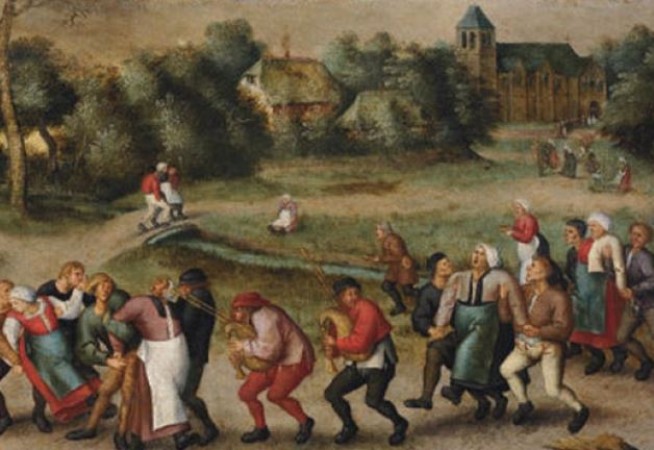
In the summer of 1518, a bizarre and bewildering phenomenon struck the city of Strasbourg, Alsace, in what is now France. Hundreds of people found themselves unable to resist the urge to dance, often for days on end, in what became known as the "Dancing Plague." This mysterious event has puzzled historians, medical experts, and sociologists for centuries. In this article, we will delve into the historical accounts of this bizarre incident, explore possible explanations, and reflect on its significance in understanding the human mind and collective behavior.
The Origin of the Dancing Plague
The origins of the Dancing Plague remain somewhat shrouded in mystery. It is believed to have started in July 1518 when a woman named Frau Troffea began dancing fervently in the streets of Strasbourg. What began as a solitary dance soon spread like wildfire, affecting more and more people as the days passed. The uncontrolled dance seemed contagious, and the numbers grew rapidly, reaching almost 400 people within a month.
The Outbreak in Strasbourg
The outbreak in Strasbourg was both fascinating and terrifying. It wasn't an elegant or joyful dance; instead, it was described as a frenzied and chaotic movement. The afflicted individuals danced uncontrollably, their bodies writhing and convulsing in pain, often until they collapsed from exhaustion. Witnesses reported that the dancers showed no signs of pleasure; on the contrary, they appeared tormented and desperate.
The Uncontrollable Dance
The Dancing Plague seemed unstoppable, and the city authorities were at a loss for how to handle the situation. Attempts to intervene were futile as even onlookers and officials were drawn into the relentless dance. Some accounts suggest that some of the dancers died from sheer exhaustion, heart attacks, or strokes during their dance marathons.
Medical Theories and Explanations
Historical records document various medical theories and attempts to explain the Dancing Plague. Physicians from the time proposed causes ranging from astrological alignments and demonic possession to imbalances of bodily fluids. One popular belief was that the dancers were cursed by St. Vitus, hence the term "St. Vitus's Dance," which was often used to describe the phenomenon.
Social and Cultural Impact
The Dancing Plague of 1518 had a significant impact on the social fabric of Strasbourg. It disrupted daily life, affected productivity, and raised concerns among the populace. In response, local authorities organized special dancing halls, hoping that the dancers would eventually dance themselves to exhaustion and heal. However, the condition persisted, and the phenomenon gradually faded away as mysteriously as it had appeared.
Theories and Speculations
Even today, experts debate the root causes of the Dancing Plague. Some believe it was a form of mass hysteria or a stress-induced reaction to economic hardship or political instability. Others speculate that it may have been caused by poisoning from contaminated grain or psychotropic substances. The true explanation remains uncertain, and the Dancing Plague remains an enigmatic event in history.
Modern Interpretations
In modern times, the Dancing Plague continues to fascinate and inspire various interpretations. Artists, writers, and performers have used the event as a metaphor for uncontrollable human behavior, exploring themes of mass psychology, collective consciousness, and the power of suggestion. The incident has left an indelible mark on popular culture, serving as a reminder of the mysterious and unpredictable nature of human behavior.
Similar Historical Events
While the Dancing Plague of 1518 stands out as one of the most well-documented incidents of its kind, similar dancing outbreaks have been recorded in history. Instances of mass dancing occurred in different parts of Europe during the medieval and early modern periods, albeit on a smaller scale. These events reinforce the notion that human behavior can sometimes defy rational explanation.
The Dancing Plague of 1518 remains an intriguing and perplexing event in history, capturing the imagination of generations. It serves as a reminder of the complexity of the human mind and the potential for unusual collective behaviors. Despite the passage of centuries, the true cause of the Dancing Plague remains elusive, leaving it to be a captivating historical mystery.
Eastward Bound: Putin's Power Play as He Heads to China in October
Lawmakers argue that the UK should declare Russia's Wagner a terrorist organisation
The Roanoke Colony Mystery: The Vanishing Settlers of the New World